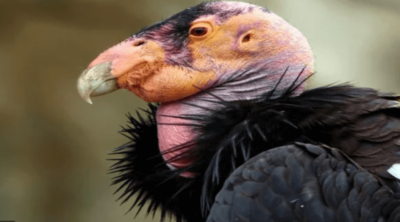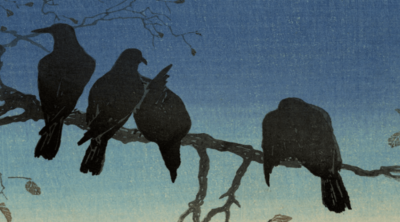
The great horned owls are strong owls prowling the skies, with the intention of striking their prey. These owls can strike animals far larger than themselves.
Great horned owls are large, aggressive, powerful owls found soaring in the night skies. Although they hunt both during the day and night, these owls are nocturnal, and quite difficult to spot during the day. Their prominent fluffy ear tufts separated by lovely yellow eyes and the bright white patch on the throat of the bird, makes the bird worth spotting.
The great horned owls habitat mostly ranges from the suburbs, forests, woods, parks of Canada and the United States. Since these owls are quite versatile and adaptive, they are a common sight in these regions. Scientifically called Bubo virginianus , among all the different types of owls, these are the most fearsome.
Interesting Facts about Great Horned Owl
The Mystery Behind the Name
The name great horned owl suggests the involvement of some kind of horns. These owls do not really have actual horns, instead have tufts or feathers that bear semblance to a horn. In fact, some people also call them cat owls, since they feel the tufts appear similar to cat’s ears. Thy have nothing to do with hearing. They help in camouflaging the animal, by helping it blend in as it perches. The tufts stand up like ears when the owl is inquisitive and falls flat when it’s irritated.
Camouflage
While great horned owls can be easily identified by their horn-like tufts, and white patch of feathers on the chest, they are very well camouflaged. Their brown, black, white and gray streaked body feathers, help them blend well with the surroundings. This is why there are very slim chances of spotting great horned owls; and they being nocturnal birds reduces the chances even more. In humid areas, these birds have a more dark-brownish appearance, and the ones in drier zones have a lighter shade.
Diet
This magnificent, powerful hunter bird relishes on frogs, insects, mice, rabbits, squirrels, skunks and several other smaller birds. Its hunting time is from dusk and all through the night. In fact, these large predators in the skies also savor house cats and porcupines. They also hunt their own kind. To digest the house cats or porcupines, these owls need to have a great digestive system. Sometimes, they swallow their prey as whole and then regurgitate pellets comprising fur, bones, etc.
Hunting Skills
These owls strike from above and use their powerful talons to take the life of their prey. They use their listening skills and excellent eyesight to spot the prey. Their loose, soft, comb-like feathers enable them to swoop down silently and kill their prey. They even use these strong talons to lift their prey, which are far heavier than themselves, that’s why they are also referred to as the ‘tiger in the sky’. Besides striking from above they also walk on the ground looking for smaller animals.
Turning their Heads Around
Since great horned owls are incapable of moving their eyes, they have been given the ability to turn their heads around. There is a myth that owls can turn their head 360 degrees, however, the owls have 14 neck vertebrae, that only allows their head to move 270 degrees. For peripheral vision, the owls have to turn their heads around.
Getting Victimized
These large owls manage to catch larger prey, however, in turn get harassed by flocks of American crows. If a crow finds a roosting owl, it will create a racket, by calling for its fellow crows. Large number of crows come together to mob the great horned owls. They mock these owls by yelling and making all sort of demeaning noises for hours together. However, there’s nothing more these crows can do to them. he greatest enemy of the great horned owl is other great horned owl.
Hooting
Unlike the barred owl, also found commonly in the Illinois skies, these owls hoot mostly in early winter, which is more of the mating time for the birds. Their hoots sound something like a soft and faint, ‘who, who, whooooo’. This call is quite distinguishable. Oft one can hear the male and females singing together. The males have a deeper voice than the females, thus, one can differentiate between the male and female hoots easily. Besides, they also make a barking, hissing, and screaming noise.
Breeding
After pairing off in early winter, the owls begin nesting by February. The male and female owls call each other through hoots. Great horned owls do not prepare their own nests, instead they take over vacant stick nests left by other birds such as herons, hawks, etc. They also nest in tree holes, caves, deserted buildings or even cacti, as shown in the picture. The mother owl lays 2-3 eggs in these nests and sits on them for a month or so. The males help the female with incubation and hunting.
Owlets
Owlets hatch and feed in the nest for 45 days or so. However, their raw flying skills keep bringing them back to the nest each day. After about 3 months of age, the owlets master their flying skills. They continue to remain with their parents till they attain about 5 months of age and then venture out on their own. Once they are 2 years old, they will begin to mate. Great horned owls are seen to live to about 13-15 years in the wild, but in captivity they are seen to live almost 25-30 years.
Maternal Instincts
Female horned owls may not be good homemakers and put no effort in building or repairing nests. They
just use abandoned ones instead. However, they do make good mothers, and are extremely protective of their young. No matter how cute and adorable you find the owlets, think twice before you go near them. Mother owls are super protective of their young ones and will do anything to defend them. They are known to have attacked people who have tried wandering close to their young ones. So beware!
Horned owls exist in plenty across the US, however, many become road accident victims. Moreover, some get electrocuted in power lines and some are shot dead by ignorant farmers. Just because these birds are not yet in the list of threatened species, doesn’t mean we can be careless.











